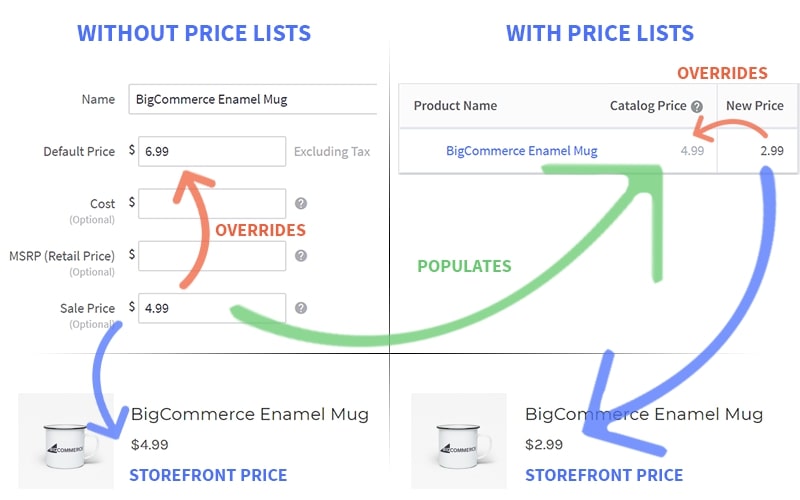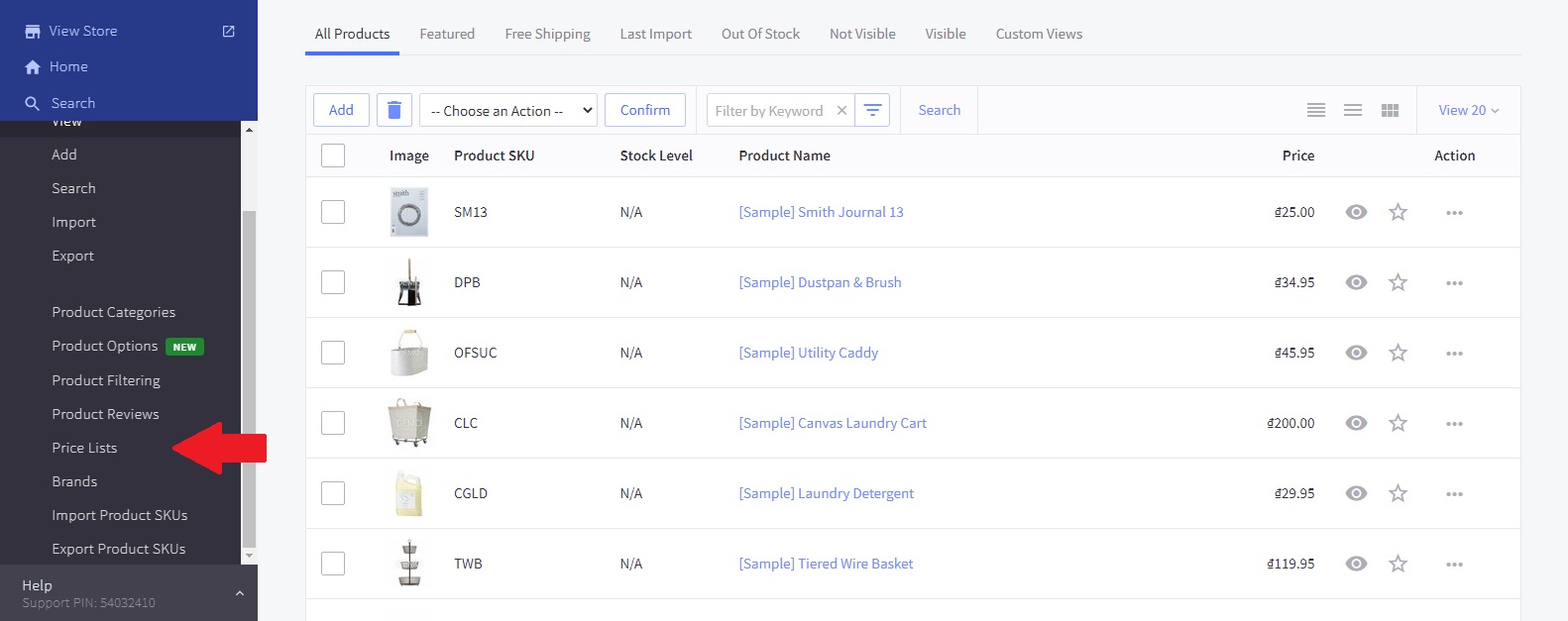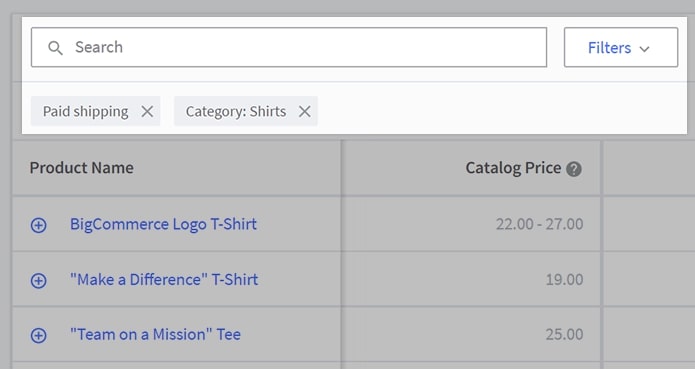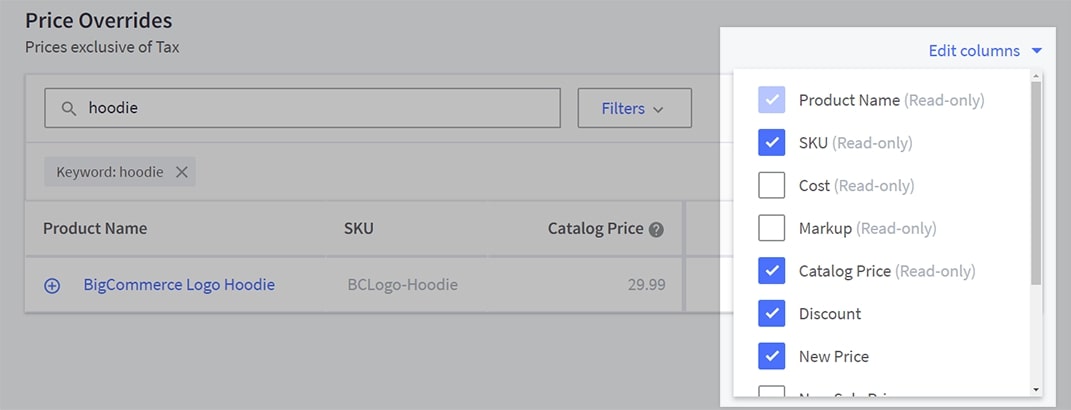How to Set up BigCommerce Price Lists
When it comes to managing a large number of orders and customers on a daily basis, it might be difficult to keep track of the changes in price. In case you are dealing with the same problem, BigCommerce price lists are what you are looking for.
In today’s article, we are going to introduce you to this outstanding tool in order to solve the puzzle and focus on How to set up BigCommerce Price Lists for your online business. We hope you will enjoy it!
What is a price list?
Using a BigCommerce Price List, you may fill several catalog price structures and apply them to various customer groups. It is defined only at the variation level, and that is why the prices are determined.
The catalog pricing will be applied if an active price list does not include prices for a variation. The Control Panel or the Customer Groups API enables you to connect a Price List to a Customer Group. If you are using a Stencil theme, a BigCommerce Price List can even offer your storefront with overridden pricing values. The final price display may be further customized inside the Stencil template.
The difference between Catalog Pricing and Price List Pricing

Talking about the definition, Catalog Pricing will list your retail price for a particular product or variant without any additional list pricing added on. The regulations for applying the price are dependent on your preferences or Sale Price. On the other hand, BigCommerce Price Lists primarily used to override a normal catalog price:
More specifically, whenever a new product/variant is entered into a BigCommerce price list, a “price record” will be created. In this way, the Price List has already replaced the Catalog Price for such a product or variant. The pricing list may also utilize the Catalog Price to determine other missing values as required. In the image below, we have described the difference between the two types of Price lists:
How to set up BigCommerce Price Lists
With your knowledge of what a BigCommerce price list is and the way it works compared to Catalog Pricing. It’s time to set up your own price lists and make good use out of them. We will be dividing the tutorial into small basic steps, so please carefully read and follow the instructions.
A little warning before diving into the topic, creating and managing BigCommerce Price Lists is only available for Enterprise pricing plans. Therefore, if you wish to use this feature, make sure that you are using the same plan.
Step 1: Creating Price Lists
From your BigCommerce Control Panel, go to Products > Price Lists:

At this point, BigCommerce will require its users to put down a name for your list and your customers can not see it, so just make up whatever name suits your preferences. Following that are the targeted groups of customers, who can see the price for such a list of products. Both of these two fields are changeable at any time of the day.
Last but not least, “Save” your work!
Step 2: Customizing BigCommerce Price Lists
A pricing list, like a spreadsheet, displays items in columns and rows. The products are divided into rows, and product variations are bundled together. Next to the name of the product, there is a “+” button, click on it, and you will be able to add or delete the rows of variants:

On the top, a search bar will appear for every online merchant to find the products based on filter categories. In this way, you can quickly seek the product that you are going to add to the BigCommerce Price Lists:

If you want to add or delete any columns of each product, just go to the “Edit Columns” located on the right-hand side of the screen:

- Product Name (read-only): this one is obvious - it will display the name of each product or variant.
- SKU (read-only): The SKU assigned to each product/variant.
- Cost (read-only): the price of the product
- Catalog Price (read-only): the published or storefront price of the product or variant. Depending on the Sale Price or any price regulations, the Catalog Price will vary.
- Markup (read-only): the percentage of the difference between Cost and Catalog Price
- New Price: The new, computed price that will be displayed on the storefront for clients who belong to any customer category. To change the percentage, just type a new price into this box, and the discount % will be calculated.
- Discount: This is the percentage difference between the list price and the catalog price. The percentage you see in this box may be edited to generate a new price.
- Pricing Summary: The price of the product is shown here. This information includes all the sales, variation, and bulk pricing (and bulk pricing on variants).
- Bulk Pricing: The Bulk Pricing table is provided here (discounts based on quantity). Three bulk price options are available such as Discount, Off/Unit and Fixed Amount.
- New Sale Price: This will set the product or variation to the current catalog sale price. It will overwrite the New Sale Price on the parent/base product if applied at the variation level.
- New MSRP: This will take precedence over the product’s catalog retail price.
Step 3: Making your Price Lists available to customers
At the first step, we have “Save” the BigCommerce Price Lists after creating it, but this does not mean that your customers can see it on your website. Only when you turn on the toggle for the “Status” column of each price list, this will publish it:

Step 4: Managing BigCommerce Price Lists
When you enter the BigCommerce Products page, all of your pricing lists, including names, the number of client groups, and their current state, will be shown on your screen. It is from here that you may build, modify, and share pricing lists. The great thing is that you can have as many BigCommerce price lists as you like, and each of them can be applied to multiple consumers at once.
Step 5: Deleting a Price List
Next to the “Status” column of each BigCommerce Price Lists, there is this icon of three dots, click on it, and you can either modify, publish or “Delete” the pricing list:

Conclusion
To sum up, designing an effective price list is a significant factor contributing to your online brand’s success. For this reason, it is recommended that online retailers should categorize the products and groups of customers before uploading them to the system. Finally, we hope you find this article helpful about How to set up BigCommerce price lists!





